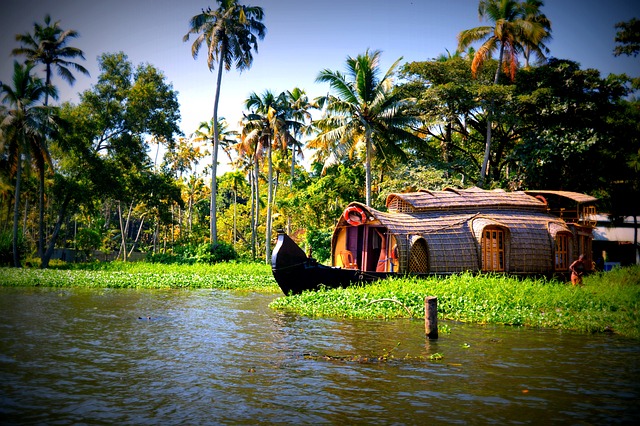As of 2023, India has emerged as a global leader in remittances, with a remarkable figure of $125 billion being remitted by Indians worldwide, according to a recent report by the World Bank. This substantial amount signifies the significant financial contributions made by the Indian diaspora to their home country.
Let’s understand what remittance means:
Actually when citizens of country went to outside country for the purpose of business or profession and send money that is foreign currency to the home country for any purpose that is known as remittance.
In general language due to sending foreign currency to the home currency foreign exchange of the country is increased.
Now understand Kerala remitted the highest in all the states of India. Migration of Kerala people in Middle East is more since 20th century in the search of high paying job. That is why migration rate in Kerala is high. People who went to Middle East Countries send one part of the salary to family in India. As a result remittance of Kerala is high as compare to other states. That increases foreign exchange of India.
Certainly! In more detail, the connection between the people of Kerala and job opportunities in Saudi Arabia, Qatar, Oman, and Kuwait is rooted in the discovery of crude oil in these Middle Eastern countries. When Saudi Arabia first found oil, they needed skilled labor to support their growing industries. Fortunately, Kerala had a well-educated and skilled workforce due to the focused efforts of its government.
The government of Kerala was proactive in social reforms, education, and promoting gender equality. A substantial portion of the state budget, around 40-45%, was dedicated to these areas. This commitment to social development paid off, and Kerala successfully addressed various social issues following its independence.
As a result, the people of Kerala became highly qualified and proficient in various fields, making them attractive candidates for employment abroad. When other Middle Eastern countries like Qatar, Oman, and Kuwait also discovered oil, they faced a similar need for skilled labor. The Keralites, recognizing the opportunity for better pay and improved living standards, migrated to these countries to fill the demand for skilled workers.
The journey of Keralites seeking employment in the Middle East is intricately linked to the region’s oil discoveries and the foresighted social and educational policies of the Kerala government, which empowered its people to compete globally in the job market.
The migration of people from Kerala to work in the Middle East, particularly in countries like Saudi Arabia, Qatar, UAE, Oman, and Kuwait, has had several effects on the economy of Kerala:
- Remittances: One of the most significant impacts is the influx of remittances from Keralites working abroad. The money sent back by expatriates contributes substantially to the Kerala economy. These remittances are often used to support families, invest in education, and fund various development projects.
- Improved Living Standards: The remittances sent by Keralites working in the Middle East have helped improve the standard of living for many families in Kerala. Families can afford better housing, education, healthcare, and other essential amenities.
- Reduced Unemployment: The migration of skilled workers has helped alleviate unemployment in Kerala. As individuals seek employment opportunities abroad, it eases the pressure on the local job market and provides employment to those who remain in the state.
- Skill Development: The exposure to international work environments and diverse industries in the Middle East contributes to the skill development of the Keralite workforce. This, in turn, enhances the overall competitiveness of Kerala’s labor force.
- Foreign Exchange Reserves: Remittances from Keralites contribute significantly to India’s foreign exchange reserves. This influx of foreign currency has positive implications for the broader Indian economy.
- Entrepreneurship and Investment: Some individuals who return from working abroad bring back valuable experience and financial resources. This has led to an increase in entrepreneurship and investment in Kerala, contributing to economic diversification.
- Social Changes: The migration has also brought about social changes in Kerala. Exposure to different cultures and experiences abroad has influenced societal norms, values, and lifestyle choices.
- Challenges: However, it’s important to note that there are challenges associated with the migration, including issues related to family separation, cultural adjustments, and potential exploitation of migrant workers. The state also needs to ensure that it doesn’t overly depend on remittances and that there is sustainable development within the state.
In summary, the migration of Keralites to the Middle East has both positive and negative impacts on the Kerala economy. While remittances play a crucial role in economic development, there are social and economic challenges that need to be addressed for balanced and sustainable growth.
Geographical Overview:
Kerala, located in the southwestern part of India, spans an area of approximately 38,863 square kilometers.
Despite its relatively small size in terms of land area, Kerala is densely populated and known for its diverse geographical features, including the Western Ghats, backwaters, and coastal regions.

Population Statistics:
As of the latest data available, Kerala is home to a population of approximately 3.46 crores (34.6 million people).
Kerala’s population constitutes about 2.76% of the total population of India, which is significant given its size compared to other states in the country.

Land Area Comparison:
Despite being just 1.18% of India’s total land area, Kerala’s demographic density and economic contribution highlight the significance of its role in the country’s overall development.
Economic Contribution:
Kerala plays a substantial role in India’s economic landscape, contributing around 4.11% to the total Gross Domestic Product (GDP). Per capita income of Kerala is Rs. 2,33,000/-. It is one of the highest per capita income in India.

The state’s economy is diverse, with contributions from sectors such as tourism, remittances from the expatriate population, agriculture, and services.
Conclusion:
The economy of Kerala is remittance based economy. This is beneficial for Country but over dependence on the one source of GDP can danger the state and create economic problem in future. Remittance and migration is depending on the stability of Middle East countries and job opportunities. Middle East is the crucial area of world therefore, instability can be created there which can affect indirectly Kerala’s economy.
